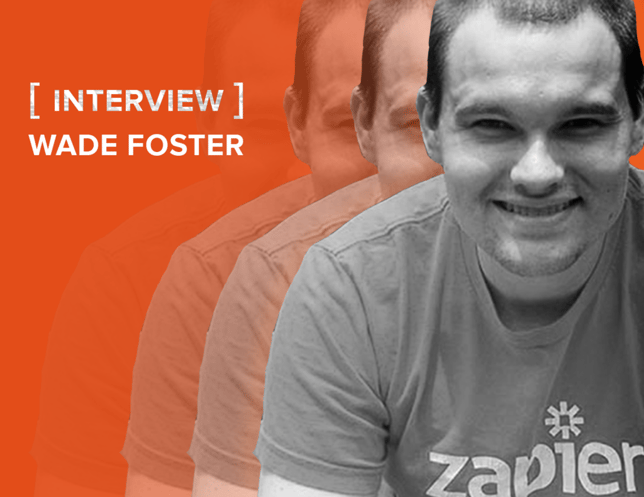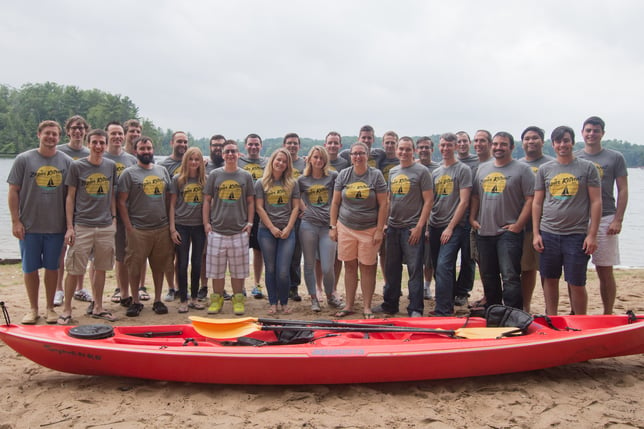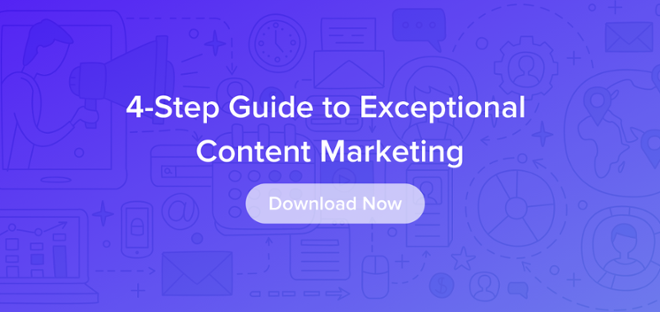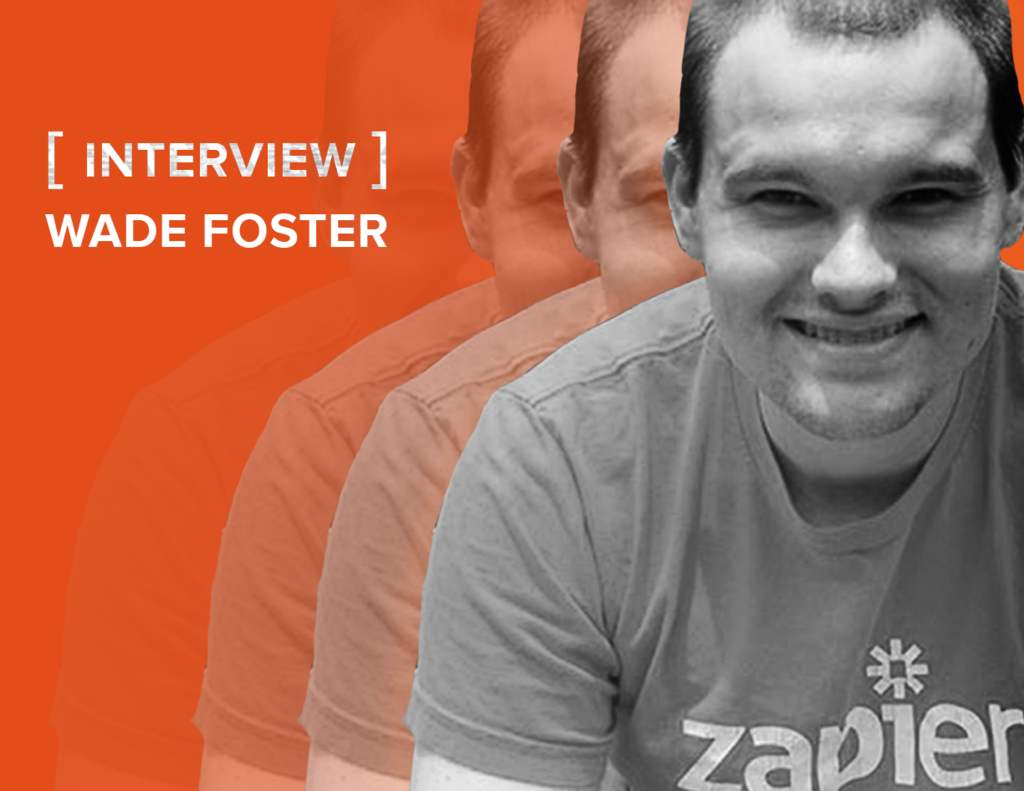
“We’re just some humans who think computers should do more work.”
This mantra lives on Zapier’s “About” page, and it’s one Wade Foster, CEO of Zapier, has worked hard to develop since co-founding the online application automation company in 2011.
“We’re just some humans who think computers should do more work.”
At Zapier, Foster innovates ways his company can help consumers link web apps; after only four years, he’s grown the company from a concept at Columbia Startup Weekend to a full-fledged corporation that now serves more than 700,000 users internationally.
To learn more about his company’s growth and where he sees the industry progressing, we sat down with Foster and asked him a few questions.
Full disclosure: Zapier is a company that has worked with Influence & Co. in the past; however, we were not working together at the time of this interview.
To listen to the audio recording of our interview with Wade, click below:
Zapier is an amazing service that allows you to connect the APIs of your existing apps so they can work together, saving time and energy. In addition, you guys have an awesome blog on productivity. How did you come up with this niche focus for your content, and how does it fit in with your overall strategy?
Our bread and butter used to be organic search. We built a big app directory where people could explore the different integrations we offered. Then, those landing pages would rank in organic search results. In truth, it was going well and driving a lot of traffic, but it’s not the type of content you can build an audience around.

We really wanted to do something to help build an audience and attract more of a brand community around Zapier. It was hard at first, and we didn’t know exactly what we were going to write about. We gradually realized that we got a lot of attention because of the apps that we work with and the integrations surrounding them.
"In truth, it was going well and driving a lot of traffic, but it’s not the type of content you can build an audience around."
So we decided to focus not only on automation and productivity, but specifically on how these topics relate to all these apps that people are already using in their work. We moved from fluff posts on waking up early to the nuts and bolts: how to use the tools that are out there, as well as the ones that you’re already using in your business.
We’d love to know more about where target marketing fits into your overall marketing strategy. What goals are you using the blog to accomplish?
The content is an amplification or a megaphone for what we already do. You may not be looking for specific integration today, but you’re probably interested in being more productive and being able to automate some of your work. We can get you in our ecosystem through the blog or through the books we publish. It gets us into this broader discussion of which apps are best for running a business and how can we maximize our use of them.
"The content is an amplification or a megaphone for what we already do."
We noticed that you guys are hiring very, very quickly, and you’re also publishing content on your blog about your employees. Are you using the blog to help with some of your recruitment strategies as well?
Yeah, we have a book that we put out on remote work, and we’ve got about 10-15 posts that we’ve written specific to that. Even in the content that isn’t specific to remote work, we’re weaving in little stories about how we like to work. We want to show off our personalities and who we are at Zapier. It definitely is one of those extra benefits you get when you’re putting a lot of content out there — you get to share a little bit about yourself, too.
"We want to show off our personalities and who we are at Zapier."

Stemming off that, do you have any top blog posts that have exceeded expectations? What were the elements that made them perform the best?
Our pillar content on Zapier tends to be listicles about the apps and categories. If you go look at our Learning Center, you’ll see that we have a bunch of books on there, too, and all of the chapters in those books originally started as blog posts. In them, we really dig into the apps and figure out what makes them tick. For instance, if you’re looking for a CRM, here are the 25 or so apps that you should probably look at, and here’s what makes each great.
"Our pillar content on Zapier tends to be listicles about the apps and categories."
People are always looking for new apps. Being a part of that selection process, we help them choose the ones they want so they can hook them up to other tools that they’re already using through Zapier. Those are definitely the pillar pieces of our content strategy.
If I’m a marketer who’s really trying to beef up my long-form content, but I’m kind of lost as to how to go about that, what tips do you have for putting together some of those really deep guides, those pieces of more than 1,000 words?
I think it’s most important to pull in actual stories and experiences. We’re fortunate to have a big user base, so almost all of our posts talk about a user or an experience a user had using a specific app.
"I think it’s most important to pull in actual stories and experiences."
Once you’re pulling that in — and you’re accessing different perspectives — it’s fairly easy to take a 200- or 300-word concept and turn it into a 1,000- or 2,000-word post on implementation. The different ins and outs of how they make it work — the different apps they use and the different people involved — make the core concept more compelling because now the reader can see it and determine whether he wants to replicate it. You almost have to have this journalistic, interview-type quality to you to really go out and get that stuff.
"You almost have to have this journalistic, interview-type quality to you to really go out and get that stuff."
You guys have amazing content, and it’s definitely high-quality, but you’re not afraid to talk about your company. Some people might call this promotional. How do you straddle the fine line between promotional and educational content on your blog?
We feel pretty comfortable with the balance. Obviously, not every blog post is “Zapier 101,” “Zapier 201,” and “Zapier 301.” When we mix those in with all the other stuff, those posts end up being less than 20 percent of our total content. Most people are OK with that, and some even want more. We rarely have someone complain about a sales pitch. In fact, most people want us to sell our stuff even harder. If your audience is asking for more, you can get away with being more promotional.
"We rarely have someone complain about a sales pitch. In fact, most people want us to sell our stuff even harder."
You mentioned Zapier’s Learning Center. You guys also have a bunch of great, in-depth e-books available on your blog, and one that we’ve noticed is “The Ultimate Guide to Remote Working.” Can you tell us a little bit more about how you found yourself turning a few blog posts into full-fledged e-books?
When we reached 100 posts on our blog, we realized that a lot of those older posts were great but hidden in the back. We also realized that there were certain themes we kept going back to, like remote work and apps. It only made sense to build a strategy from this to start writing books as blog posts.
We design a book and its chapters, and we publish them individually on our blog. Then, they live there for a period of time. Once they’re all finished, we package them up nicely, move them to our Learning Center, and generate books available on Amazon. We’re also on Leanpub and a bunch of other places online where books can be read. It’s just another way of packaging all this work that we’ve already done and exposing it to a broader audience. It acts as a resource, too. People like to link to books because books are authoritative — more authoritative than a single blog post.
"People like to link to books because books are authoritative — more authoritative than a single blog post."
There are so many different ways you can use just one piece of content. Of course, a blog about productivity would come up with this strategy. Outside of that, what are new opportunities that your team is most excited about looking into in 2016 and beyond?
We’re pretty interested in some of the stuff that’s happening in the mobile and publishing worlds, iOS 9 in particular. I’m not sure how it’s going to affect basic publications that rely on ads as their business model. Are they going to be around much longer? iOS 9 has brought that question to the forefront.
Apple News is another place where we’re publishing content now and trying to get more exposure. There are a lot of things in 2016 that could be advantageous for folks who don’t rely on ad revenue to put out content. For us, we rely on software subscriptions. Some players may disappear, which will be kind of interesting.
"There are a lot of things in 2016 that could be advantageous for folks who don’t rely on ad revenue to put out content."
We love asking this question during interviews: What are you currently reading or listening to (aka what media are you consuming)?
I just wrapped up “High Output Management” by Andy Grove. I think it’s been around for about 30 years now. Grove was the CEO of Intel, and the book basically delves into Management 101. It’s interesting to me because the Zapier team now totals almost 30 people, and I’m doing a lot more managing. Surprisingly, it holds up pretty well. I would recommend it to anyone who finds himself managing a team for the first time.
To conclude, we have one more question. What are your favorite Zaps? I’m sure you have millions in your head, but what are your favorites?
There are a few things I like, many of which revolve around Trello, Slack, Twitter, and things like that. One of my favorites is an email I send out, our monthly investor update. I have a draft email set up, the recipients already BCC’d, and the subject line written. All I have to do is update here and there before I send it. I love that one.
"One of my favorites is an email I send out, our monthly investor update. I have a draft email set up, the recipients already BCC’d, and the subject line written. All I have to do is update here and there before I send it. I love that one."
Also, there’s a hiring checklist that I use every week. I have a Zap that automatically inputs a Trello card into my hiring board each week with a checklist on it that includes each item I need to go through. When I wake up on Monday morning, that card is there telling me exactly what I need to do. I really like that, too.
Finally, our design team uses Dribbble a lot. Dribbble is a site where you can post screen shots, designs, and snippets of things that you’re working on. For whatever reason, people love visuals — surprise, surprise. Whenever they post something to Dribbble, I automatically tweet that image and say, “Hey, here’s a sneak peek at what our design team is working on.”
"For whatever reason, people love visuals — surprise, surprise."
It’s a social media favorite machine. I don’t even have to think about it. Furthermore, I can automatically share a blog post via Buffer, which is cool. I could go on and on for days.
I’m sure it’s been quite the journey over just a few short years, going from a team of two of your best friends to 30 employees.
It’s definitely fun. Every day is a new day when you’re growing this fast.

Discover how your team can develop exceptional content like a pro with our 4-step guide:












